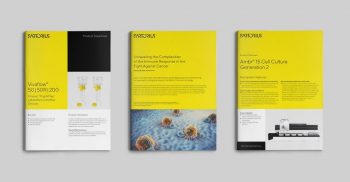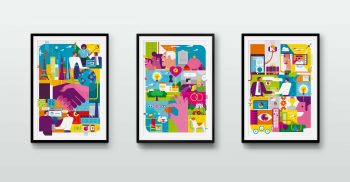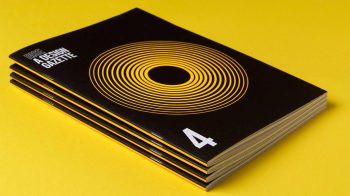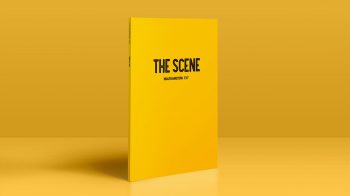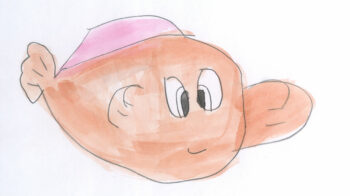How to write a creative brief
It’s a fact that creative projects are by their nature evolutionary, what you start with may change and develop and to optimise the creative outcome you may move into areas that cannot be entirely anticipated at the beginning.
And by being non-linear simply puts greater emphasis on the set up, on establishing the rules of the house, the objectives and the stages that we know will occur that will create the structure for the creative process to follow on behind, and to flourish.
Yes, we are talking about the creative brief.
Not only will the right brief increase your chances of getting the right result, it also ensures that you, as the client, and your designers have a clear set of reference points to anchor both the legitimacy of the creative solution – are we communicating what we want to, to the right people, in the right way, but ultimately it provides a measure in the form of the objectives to measure the final results against.
So if you are thinking of commissioning a graphic design project it remains vital to prepare a detailed design brief before a mouse is lifted in anger.
The best design projects start with the tightest briefs and end with the widest possible creative solutions.
To help get you started, we have put together some simple content pointers on what you might want to include in your creative brief:
Background
In reality, every business, of whatever size, should be able to summarise in two sides of A4 the following details – its a very useful activity to do anyway, but invaluable for agencies, press and other external stakeholders. Provide a summary of the business/client including history, structure and key personnel What do you do – products, services, markets and geographical coverage? And how do you do it – if you have them, please provide details of any boilerplate, mission/vision statements, values or belief statements etc
Objectives
At its broadest and most simplest, summarise what the project is about – what’s the problem we need to fix, the opportunity we need to exploit, the challenge we, our business or brand need to meet? For added context, are there any particular circumstances that have brought about the need for this project – for instance, increased competition, new entrants, business performance issues good or bad etc
Audiences
Who do we want to talk to – whose attention do we need to get? This can be more than one audience, if it is, list in order of importance with a small describing profile for each one Relevant demographics – age, gender, job role, availability, language, lifestyle – what are the specific factors that could influence the decisions taken by each target audience? What is the best way to make meaningful contact with the audience? And are there any specific barriers to accessing these audiences?
Messages
This is in summary our elevator pitch for the project – and is quite possibly the most important element for your creative team – quite simply – what do we want to say this/these audience(s)? Again, content may have already been prepared, in which case include it, if not, then summarise how content will be created and what the headlines and the key messages are.
Results
Communication always has a reason for being, otherwise we are all just shouting into space, so what do you want your audience to think, feel, understand or do because of what you are telling them? What will success look like – picture the audience you describe in the section above and then tell us what you would most want them to say at the end of the project? Will there be any formal measurement process at the end of the project – if so outline what that would be.
Positioning and competition
Who are your competitors? (If you don’t have any – then feel free to ignore the next few questions) Provide a realistic market evaluation of your company, service, or brand relative to your competition and/or market – are you a new supplier, established, are you well regarded or relatively unknown, are you the easyjet or the BA – the steady hand or disrupter? How do your fees compare with the competition – are you premium, middle ground or a value supplier?
Which of your competition present themselves well in your view and why? In your sector can you complete this sentence:
‘Company X (Us) is the only (what you do) …… that (the benefit you deliver) …….’ – the second most important element of the brief – what is your edge?
Marketing
Describe and provide samples of current marketing/communications to our intended audience What do you think works and perhaps doesn’t work so well with your current communications (include any relevant client feedback here)? In any sector, of any size – what marketing/communications have you seen that have impressed you, and why?
Team
Who is the project’s owner? That person with overall responsibility for co-ordinating the respective teams, the budget and timetable, in overall charge of making the project a success basically)
If this is not the person or team that has to finally sign-off the creative solution – who are they?
(Agency Note! designers should always have access to the ultimate decision maker – finding approval from an internal team only for a solution to be rejected by a director or the board ultimately responsible essentially just wastes everyone’s time and money)
If different, who is the projects manager? The person responsible for day to day communication, for keeping the budget and schedule on track and through who all project communications go through?
What will be the preferred method of communicating project information – managing meetings, disseminating contact reports, schedules, presentations and feedback etc?
Who else forms the internal team – what are their roles and responsibilities Are there any specific limitations on access to anyone who has key decision-making responsibilities during the project?
Practicals
If a budget has been allocated what is it?
If it hasn’t – are there parameters to work within?
What is the timeline – when are key actions or stages required by? If you have a realistic schedule of how you would like the project to advance. then include it here, if you want to work through the process with your designers, the way we prefer to work – then say so.
For us the key stages are broadly speaking:
- Consultation (research, strategy, brief development)
- Creative (concepts, field testing and design development)
- Production (artwork, printing/coding and other production)
- Launch/Promotion and measurement
What are the design and style guidelines we will need to work to? Are there any other suppliers we will need to work with?
And then what happens?
The author Jon Steel described the creative brief as “the bridge between smart strategic thinking and great communications.” And your job as its author is to make the brief, that ‘bridge’, as effective and as useful as possible.
So once you’ve written it, spend time thinking about how your gong to present it to the people who have to answer it. How can you bring it alive, make it real, and get them as excited about it as you are. And good luck. Let us know how you get on.


